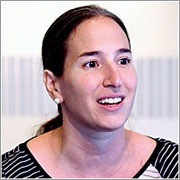Blog Post
Closing the Scholarship-Policy Gap with Strategic Science

This summer the Trump administration announced further delays in (1) implementing calorie labels on restaurant menus across the nation and (2) rolling out a new nutrition facts label. Both policies are designed to increase nutrition transparency and arm consumers with important health information when making decisions. This signals little interest from the current administration in promoting sound, common-sense nutrition policies. It also highlights a need, more than ever, for scientists to communicate with policymakers at the federal, state, and local levels, to encourage evidence-based policymaking.
Most of the time, scientists generate their research questions based on what they think is interesting and important.
This approach can obviously yield valuable discoveries, but it also means that scientists don’t always have answers to the questions that urgently plague policymakers. Unfortunately, most scientists and policymakers rarely talk, let alone work together to formulate a program of research.
My own research focuses on investigating the consequences of food policies and interventions on dietary habits and health. During my graduate education, I studied with Kelly Brownell at the Yale Rudd Center for Food Policy and Obesity. Working with Kelly, I learned to embrace a different approach to science, one that aims to work with policymakers and influencers to identify and answer the research questions that they most need answered. We call this approach Strategic Science, because it involves being strategic in our selection of research topics and questions so as to increase the effectiveness of behavioral policies.
In this blog post, I describe our four-step model of Strategic Science that we’ve used in our own work.
Step One: Identify and connect with change agents. Change agents are individuals or institutions in a position to make or influence policy. A change agent might be a government policymaker, regulator or legal official, the press, an advocacy group, a non-profit organization (e.g., World Health Organization), or citizens who influence decision makers.
Step Two: Develop strategic research questions. Strategic Science is meant to complement traditional scientific inquiry by soliciting input from change agents when a scientist is crafting a research question. The goal of these conversations is to identify strategic questions, not generate strategic answers or advocate for a position. Instead, the scientist and change agent partner to identify research questions that will advance scientific knowledge, while providing change agents with policy-relevant information.
Step Three: Rigorously answer the strategic research question. This step is a scientist’s bread and butter—conduct rigorous research in an objective manner.
Step Four: Communicate research results to change agents. Strategic Science requires a commitment to not only publishing in peer-reviewed journals, but making the research accessible to change agents. This might be done through policy briefs and short descriptions that explain the methods, results, and relevance of the research in a clear and concise manner. Once the initial relationships are formed with change agents, it’s much easier to communicate the work back to them later.
I recently used this Strategic Science approach when California introduced a bill to place warning labels on sugary drink containers. At the time, there were virtually no data on how such a policy might influence consumers. After learning about the policy, I became curious about whether graphic warning labels that displayed visual images of the health harms associated with over-consuming sugary drinks would be more influential than the text-based warning labels that the bill proposed. But the immediate policy need was to do a timely study that could inform the current debate on sugary drink warning labels. I connected with a prominent advocacy group in California that had worked on this issue. Those conversations made me realize that it would be most valuable to the policy debate if I focused my investigation on the study of labels that could be realistically implemented in the immediate future. This meant that graphic warning labels were out, and our team instead designed online experiments to test whether different kinds of text-based warning label messages would be differentially effective. That research revealed that such text-based labels are able to educate consumers about the health harms of sugary drinks and may influence parent and adolescent purchases in a way that calorie information alone probably would not. It also revealed that the precise wording of the text messages that were under consideration did not matter much.
I’m still pursuing research on graphic warning labels, but the conversation with policy influencers shaped the immediate questions I sought to answer so that I could provide timely and relevant data to inform a current policy debate. The jury is still out on whether text-based warning labels would influence consumers’ actual purchases—a great deal more research in the real-world is needed to answer that question—but our initial work suggested that this is a reasonable policy to begin exploring and testing in localized settings.
We need more scientists engaging in Strategic Science to generate innovative policy ideas and help close the scholarship-policy gap, but to achieve this, academic institutions need to work to make this easier. First, academic institutions need to do more to incentivize faculty to engage in this type of research, as it requires time to foster relationships and communicate results. Second, academics need more institutional infrastructure and staff support to help them identify and connect with change agents and communicate their research. Third, it requires funders to rapidly provide funding to scientists partnered with change agents so they can address time-sensitive policy questions. Just as a doctor may generate research ideas from talking with patients, more scientists need to be having conversations with change agents who can help ensure science is asking questions that can lead to better, more evidence-based policies.